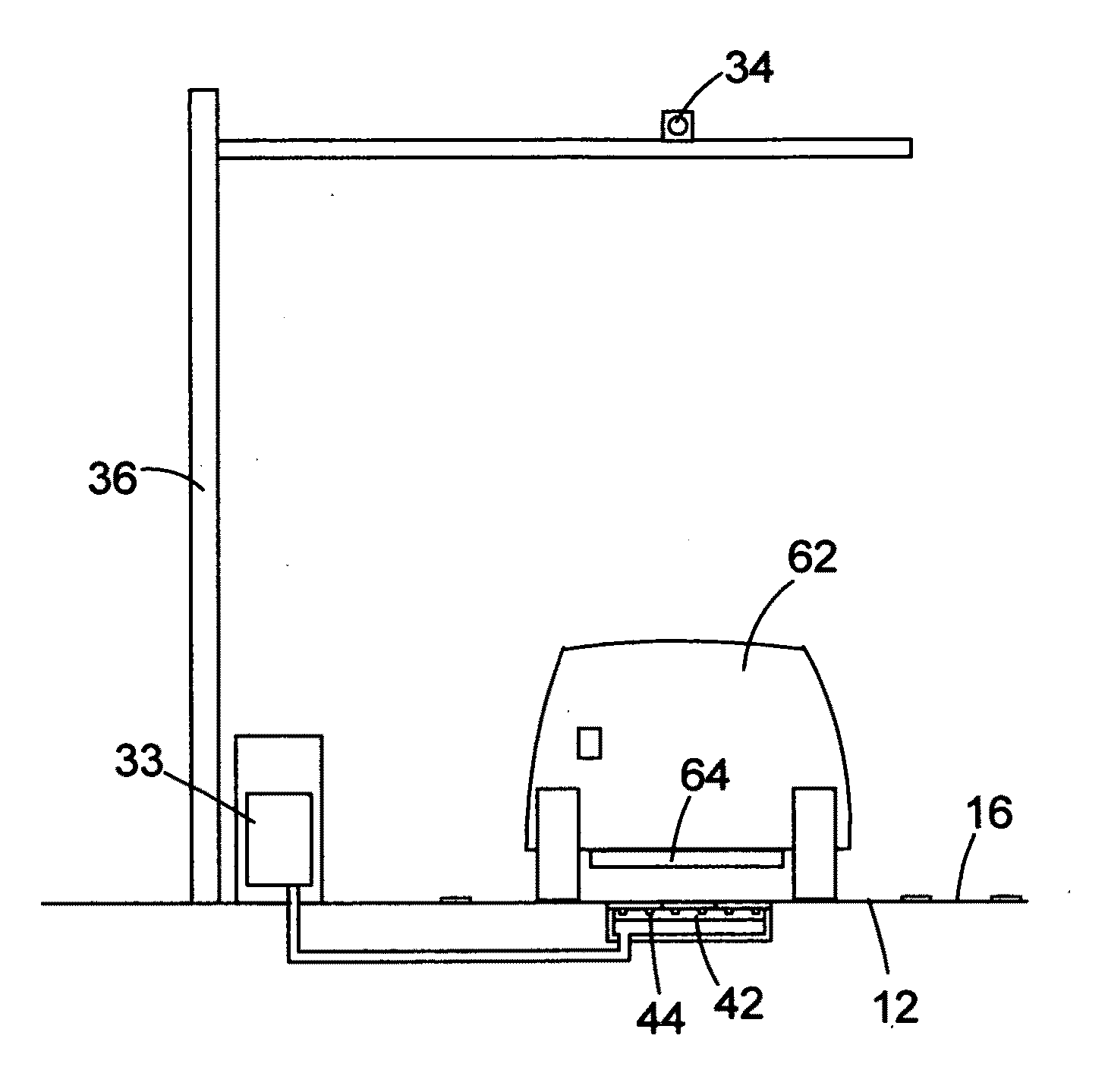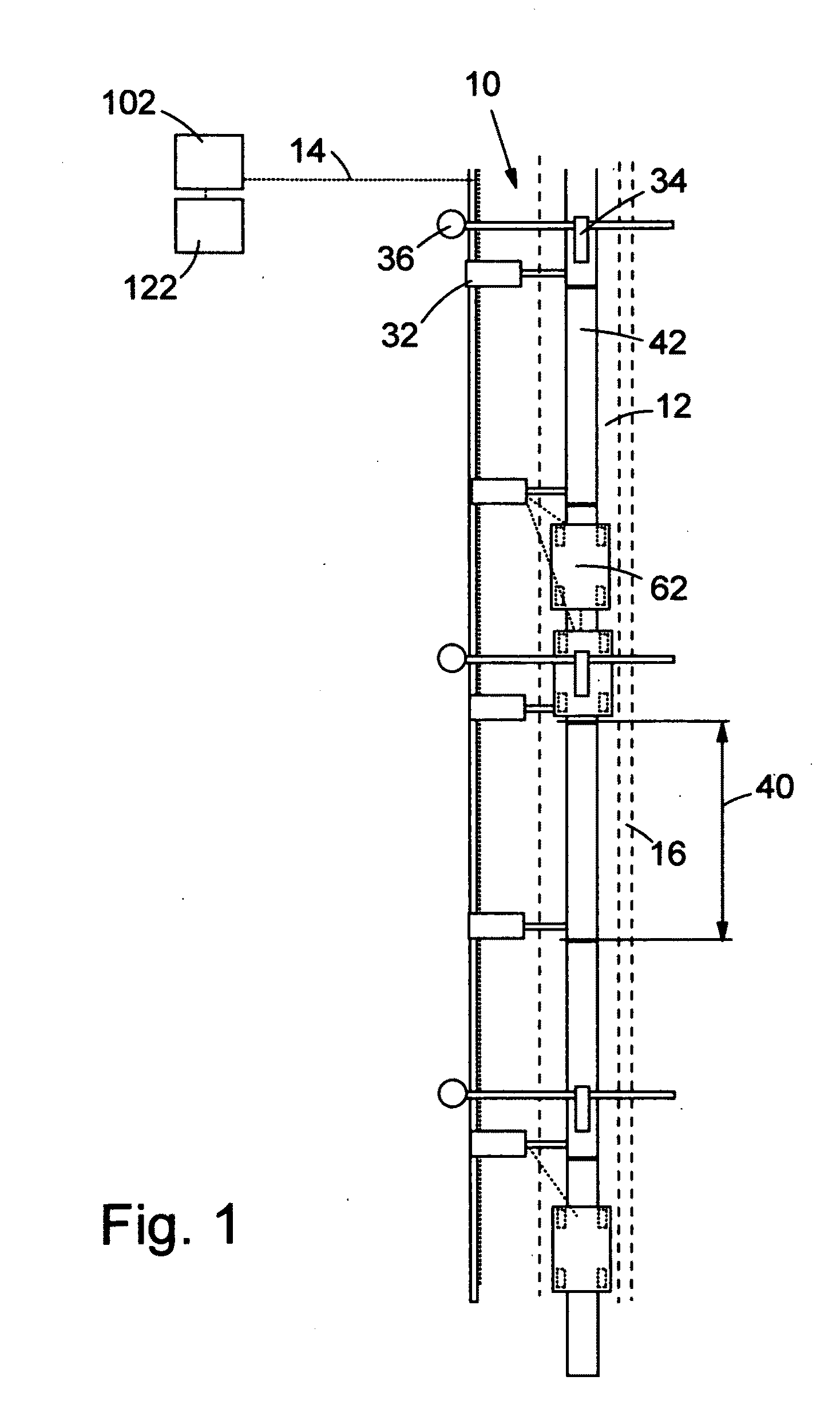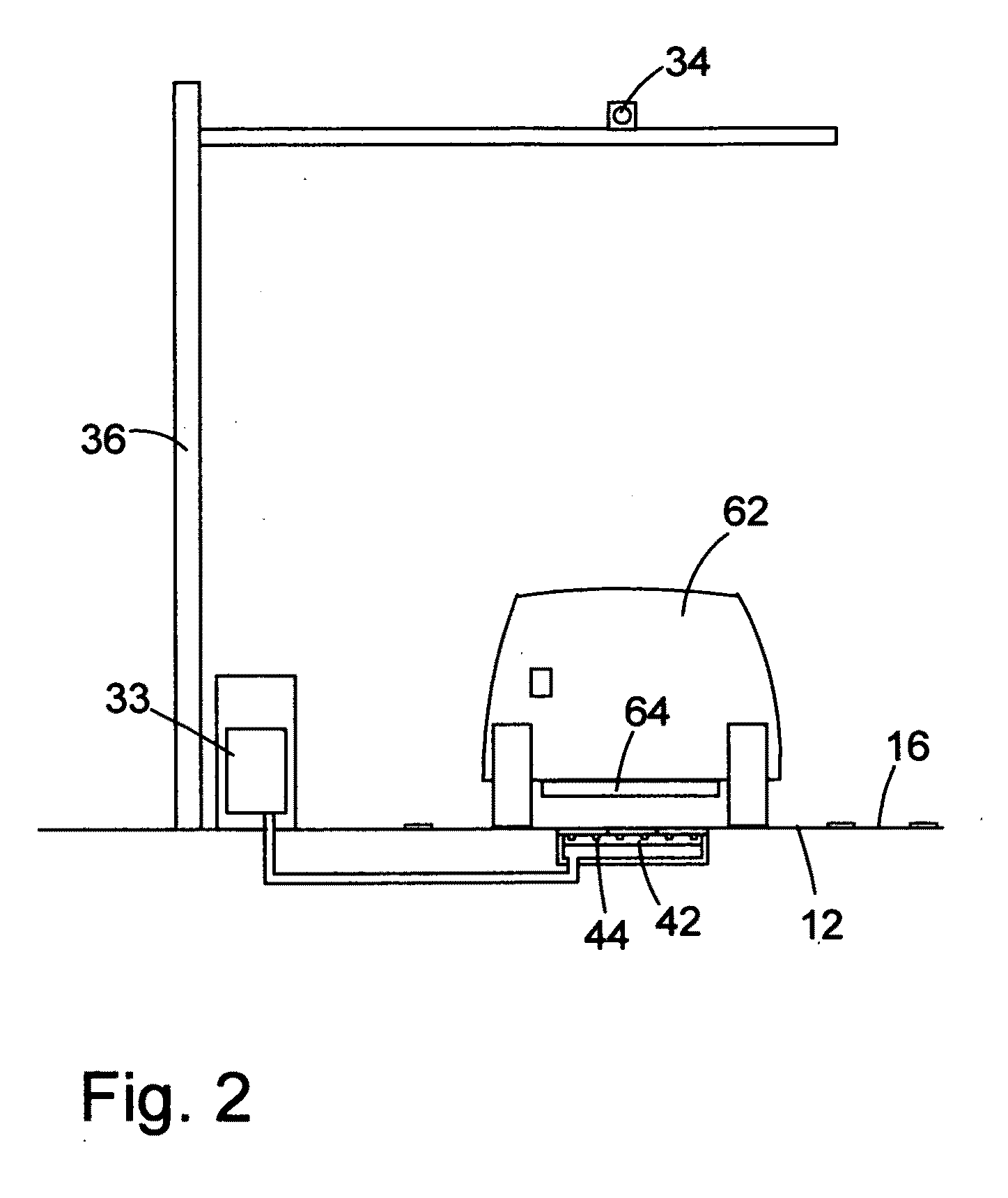Electric highway system
a technology of electric highways and electric cables, applied in the direction of cables installed in underground tubes, rail devices, instruments, etc., can solve the problems of increasing the cost of construction, increasing the time consumption, and not being able to meet the needs of high-speed operations, so as to achieve the effect of easy detection and repair and convenient repair
- Summary
- Abstract
- Description
- Claims
- Application Information
AI Technical Summary
Benefits of technology
Problems solved by technology
Method used
Image
Examples
embodiment
Preferred Embodiment
[0026]As shown in FIGS. 1 and 2, the preferred embodiment of the electric highway system of present invention includes a roadside subsystem 10; a centralized system operation monitoring center 102 and an account processing center 122 that may be located in the same facility as the system operation monitoring center; a communication network 14 that connects the roadside subsystem, the system operation monitoring center, and the account processing center and the roadside subsystem; at least one electrified lane 12 that may be separated by a non-elevated divider strip 16 from other non-electrified lanes; at least one power source such as a feeder station, and power cables that connect the power source and the roadside subsystem.
[0027]The roadside subsystem 10 includes a plurality of roadside conductor assemblies 42 disposed longitudinally serially in the electrified lane, each of which conductor assemblies includes at least one roadside conductor 44; a plurality of ...
embodiment a
Alternative Embodiment A
[0051]In this embodiment, the manually driven ordinary vehicle that is not designed to use the electrified lane in the preferred embodiment is allowed to travel on the electrified lane. The longitudinal position control of the vehicle equipped with automated operation but that happens to follow a manually operated vehicle will have to rely on the distance / speed meter during the car following mode operation.
embodiment b
Alternative Embodiment B
[0052]This alternative embodiment is generally identical to the preferred embodiment except that in this embodiment, coupling and decoupling of vehicles is done only at coupling / decoupling terminals. As shown in FIG. 10, the coupling / decoupling terminal 190 comprises at least one run-through electrified lane 12B in which coupled vehicles and single vehicles travel without stopping at the coupling / decoupling terminal; at least one coupling / decoupling lane for each coupler-height category vehicle (a coupling / decoupling lane for the car 191, a coupling / decoupling lane for the SUV etc. 192, and a coupling / decoupling lane for the large truck 193 in the three-category coupler system); and at least one lane for non-couplable vehicles 194; and at least one conventional traffic lane 195 in the coupling decoupling segments that are extensions of the main line lanes (as shown in FIG. 10), or that connected to on / off ramps to the coupling / decoupling terminal (not shown)....
PUM
 Login to View More
Login to View More Abstract
Description
Claims
Application Information
 Login to View More
Login to View More - R&D
- Intellectual Property
- Life Sciences
- Materials
- Tech Scout
- Unparalleled Data Quality
- Higher Quality Content
- 60% Fewer Hallucinations
Browse by: Latest US Patents, China's latest patents, Technical Efficacy Thesaurus, Application Domain, Technology Topic, Popular Technical Reports.
© 2025 PatSnap. All rights reserved.Legal|Privacy policy|Modern Slavery Act Transparency Statement|Sitemap|About US| Contact US: help@patsnap.com



